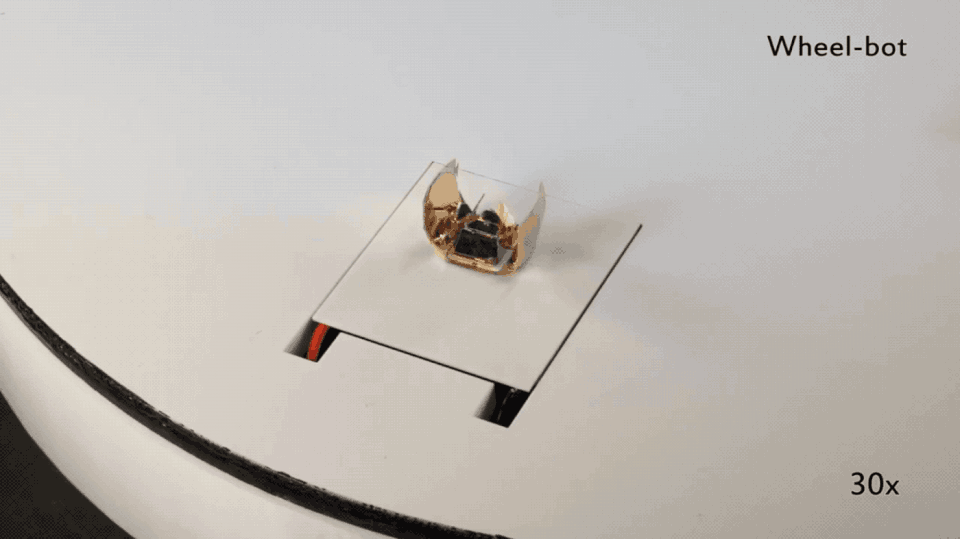MIT CSAIL's origami-bot wears foldable exosuits
It can turn into a boat, a glider and other types of machines.
Unless alien machines that can turn into cars and trucks come and teach us their secrets, we'll have to conjure up our own ways to make transforming robots. Researchers from MIT CSAIL have been on it for years, and their latest method relies on a cube robot called "Primer" that changes shape and function by donning different exoskeletons. Primer, which was based on the cube-shaped machines the team developed in 2013, starts the process by moving to the center of the exoskeletons that start as flat sheets. After applying a bit of heat on the sheets, they fold into specific shapes using Primer as a core, turning into a boat, a glider or a wheel.
The shape of the exoskeleton dictates the robot's means of locomotion -- the structure moves by controlling Primer using magnets, but it can fly when it's a glider, roll when it turns into a wheel-like structure and float on water when it's a boat. It can also simply dive into a body of water to loosen the exoskeleton's folds and set Primer free for the next exoskeleton in line.
The goal is to be able to create one machine that can perform numerous tasks. Shuguang Li, a team member and one of the authors of the study the team published, explained: "Imagine future applications for space exploration, where you could send a single robot with a stack of exoskeletons to Mars. The robot could then perform different tasks by wearing different 'outfits.'" In addition to space exploration, it sounds like the robot would also excel in search and rescue, since it can change its structure based on the environment it has to move in.


